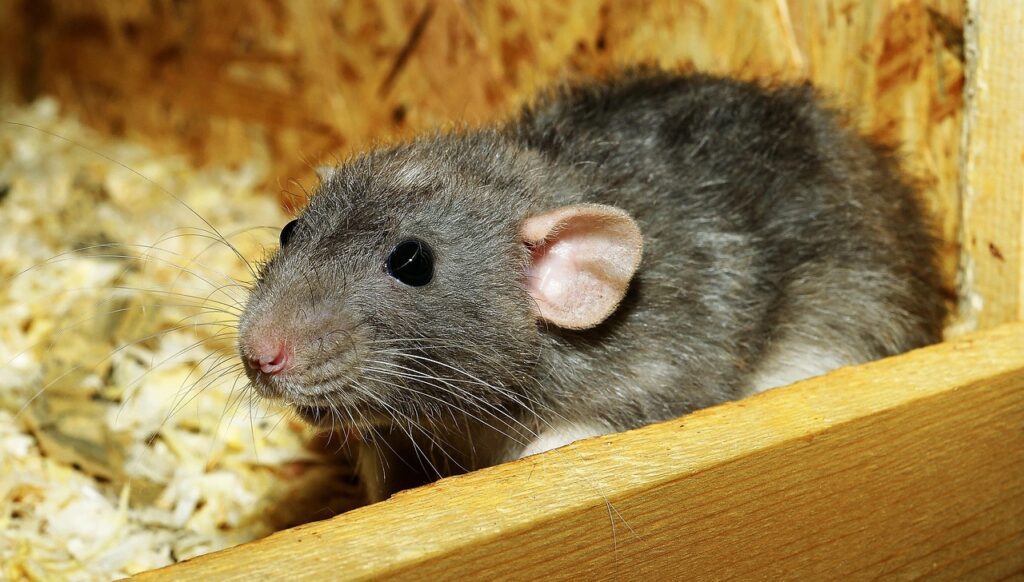Those scratching noises in your walls aren’t your imagination. When you hear them at night, you probably have unwanted guests. Rodents move into homes year-round, seeking shelter from weather and predators. They don’t need an invitation to set up camp in your attic, walls, or crawl spaces.
Read below to find out more about the common rodent hiding spots, the types of rodents, and how to identify them.

Why Rodents Choose Your Home
Before we look at specific rodents, let’s understand why they pick your house:
- Your home offers protection from predators and harsh weather
- Access to food scraps and water sources
- Dark, undisturbed spaces perfect for nesting
- Warm spots during winter months
- Entry points they can squeeze through
Rodents don’t need much space to enter. Mice can squeeze through holes as small as a dime, while rats need only quarter-sized openings. Once inside, they quickly establish themselves and start breeding.
House Mice: Small Size, Big Problems
Despite measuring just 5-7 inches from nose to tail tip, house mice cause significant damage. Their small size lets them access areas larger rodents can’t reach.
Physical Characteristics
- Brown-gray fur that blends with shadows
- Small bodies (2-4 inches) with tails adding another 3 inches
- Large ears relative to head size
- Pointed snout
- Can fit through openings as small as a pencil diameter
Roof Rats: The Climbers
Roof rats earned their name from their preference for high places. They excel at climbing and typically enter homes from above.
Physical Characteristics
- Dark brown or black fur
- Sleek bodies measuring 6-8 inches with tails longer than their bodies
- Large ears and eyes
- Pointed snout
- Total length up to 18 inches including tail
Norway Rats: The Ground Dwellers
While roof rats stay high, Norway rats prefer to keep their feet on the ground. They’re the largest common home-invading rodent.
Physical Characteristics
- Brown fur with scattered black hairs
- Thick, heavy bodies (7-9.5 inches) with tails shorter than body length
- Small ears relative to head size
- Blunt snout
- Total length up to 16 inches including tail
Less Common Home Invaders
While house mice and rats make up most indoor rodent problems, two other types sometimes enter homes:
Cotton Rats
These medium-sized rodents typically live outdoors but enter homes in cold weather or when food is scarce. They have:
- Grayish-brown fur with lighter undersides
- Medium bodies (5-7 inches) with shorter tails
- Coarse fur compared to other rodents
- Prefer ground level entry and rarely climb
Pack Rats
Also called wood rats, these rodents have distinctive habits:
- Larger than house mice but smaller than Norway rats
- Light brown to gray fur with white undersides
- Large ears and eyes
- Create large nests from sticks and debris
- Collect shiny objects (hence the name “pack rat”)
- Usually enter homes in rural or wooded areas
Telling Them Apart By Sound
Different rodents make unique sounds based on their size and behavior:
- Light scratching and rapid movement: Likely house mice, which move quickly and make high-pitched squeaks
- Heavier movement in attics and ceilings: Probably roof rats, especially if you hear climbing sounds
- Loud gnawing or heavy movement in walls: Often Norway rats, which make deeper, slower sounds
- Hoarding sounds (dragging noises): Possibly pack rats moving their collections
Timing matters too. House mice stay active throughout the night, while rats tend to feed just after sunset and before dawn.
Preventing Entry Before Identification
While knowing which rodent you’re dealing with helps, preventing any rodent entry works for all species:
- Seal gaps around pipes and utility lines
- Cover vents with fine metal mesh
- Install door sweeps on exterior doors
- Repair damaged screens and roof vents
- Keep tree branches trimmed away from your roof
- Fill foundation cracks with appropriate materials
Remember that most rodents can squeeze through surprisingly small openings. Mice need only 1/4 inch space, while rats require about 1/2 inch.
When To Call Professionals
Sometimes rodent identification and removal requires expert help:
- When you hear rodents but can’t locate them
- If droppings appear in multiple areas
- When DIY methods haven’t worked
- If you suspect a large infestation
- When rodents have accessed difficult-to-reach areas
- If family members have respiratory issues that could be aggravated
Professional services include proper identification, complete removal, entry point sealing, and advice for preventing future problems.
Health Risks Regardless Of Species
All rodents pose similar health concerns:
- They carry disease-causing organisms
- Their droppings can contaminate surfaces and food
- Fur, dander, and waste can trigger asthma and allergies
- Their constant gnawing creates fire risks when wires get damaged
- Stress and sleep disturbance from nighttime noise
The longer rodent infestations are allowed to go on, the greater these risks become. Quick identification and action keep your family safe.
Final Thoughts
Remember that rodents reproduce quickly. What starts as occasional scratching on walls can become a significant infestation within weeks. Take action as soon as you notice the first signs of unwanted guests.Your home deserves protection from these unwanted visitors. With proper identification, prompt action, and help from pest experts, you can reclaim your space and prevent these uninvited guests from returning.







